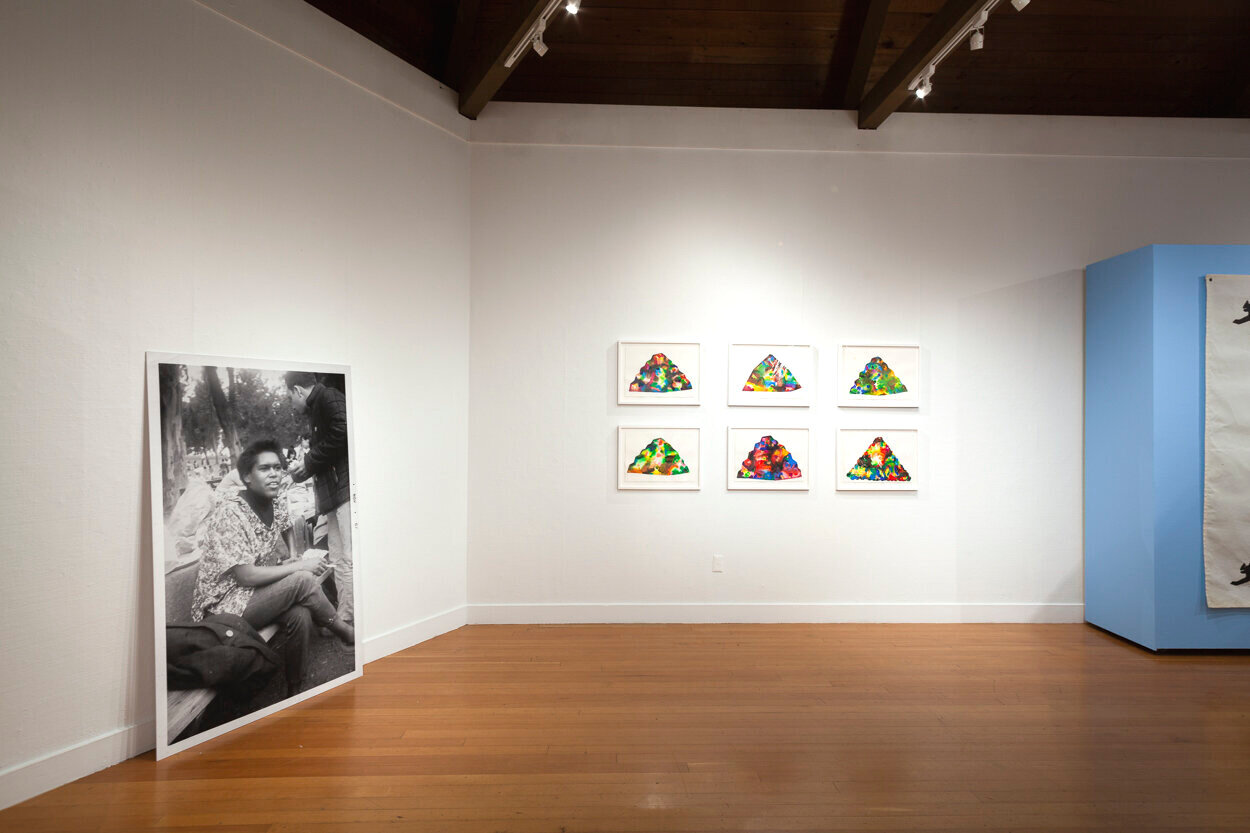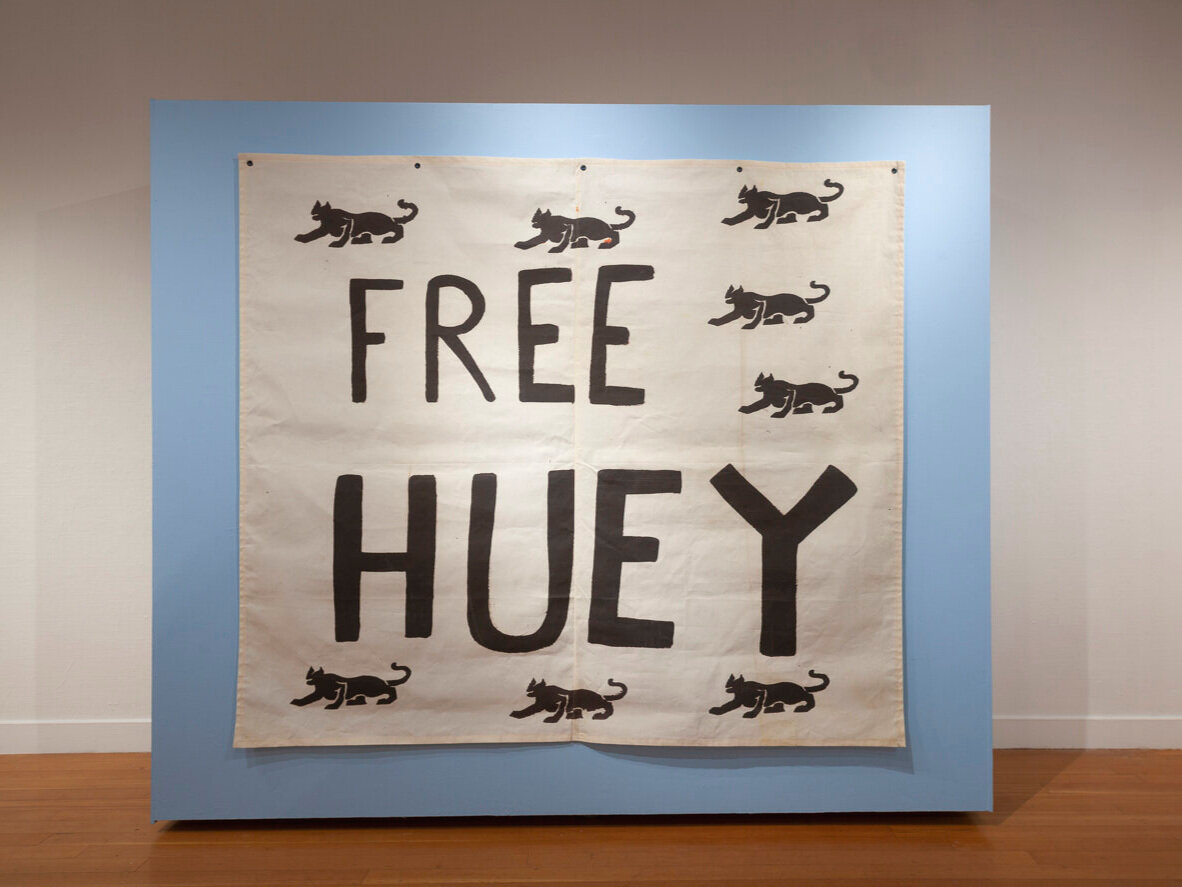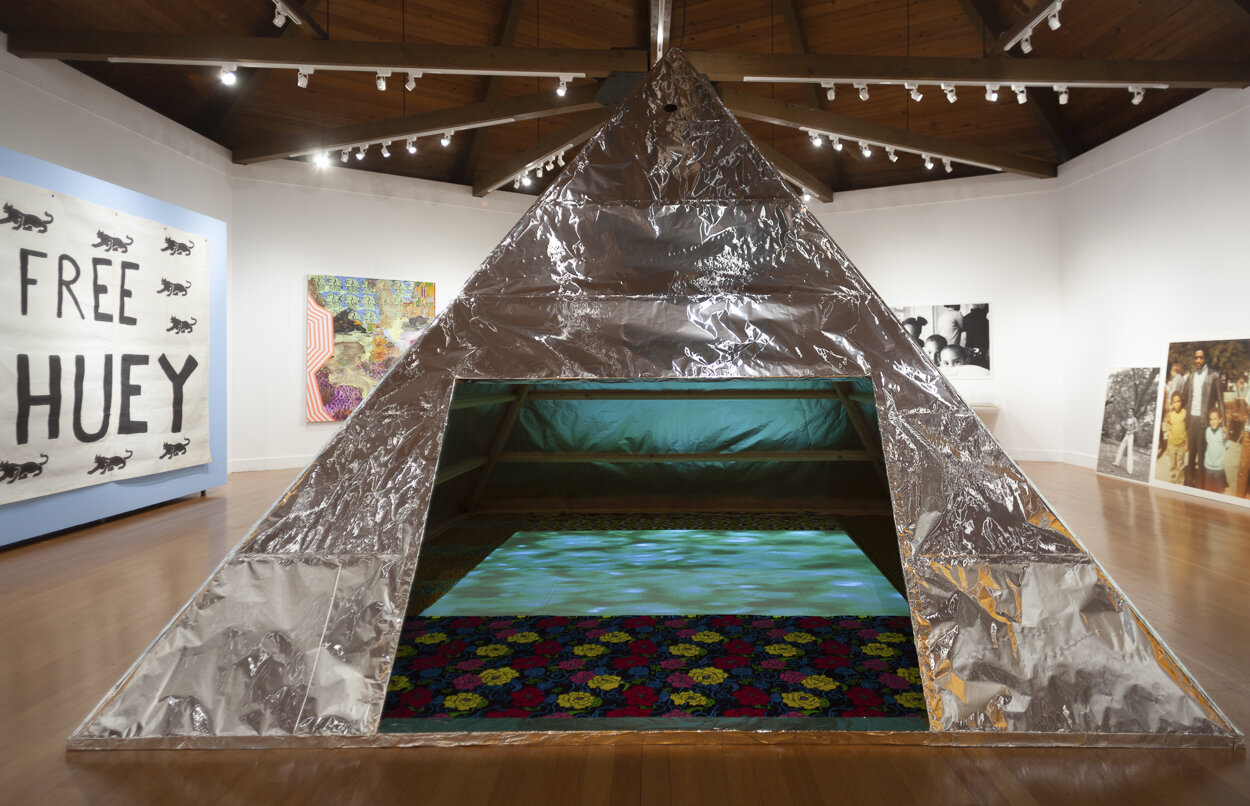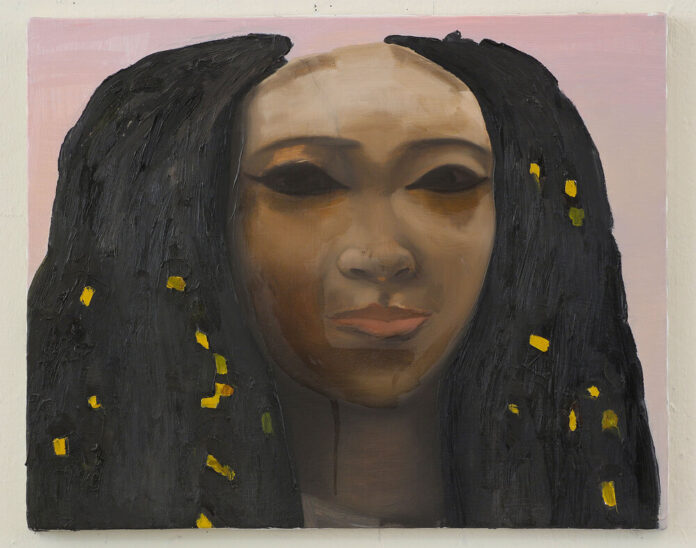In David Huffman’s exhilarating solo show at the Berkeley Art Center, “Afro Hippie” (through October 16), the artist’s paintings, sculptures, and personal archive lays out a network of ideas and individuals that have influenced the formation of Black identity and empowerment. The East Bay artist’s world was formed by mother Dolores Davis, a Black Panther activist. From an early age, he was exposed to legendary Panthers like Bobby Seale, and the expanded levels of consciousness espoused by both Berkeley hippies and the Black Power movement. In the most poignant works of “Afro Hippie,” Huffman creates room for both historical and imagined figures, and the spaces that have supported social and personal transcendence.

A glass vitrine at the entrance of the exhibition holds personal photographs of Huffman’s youth, psychedelic records by the Fifth Dimension and Jimi Hendrix, and books about the power of the pyramid. It’s through this link between the personal, psychedelic, and fringe cosmic meanderings that the artist pays homage to Black cultural and political leaders and the alternative realities of Afrofuturism.


Beautifully, Huffman claims space for his mother and her work that supported him. In a large-scale black-and-white photograph of Davis simply propped against the wall, she sits casually, as if in conversation. Nearby on the adjacent wall, Huffman presents the Black Panther “Free Huey Banner (1968/2021), designed by his mother. With the portrait about the same scale of Huffman’s large paintings and the banner even larger, the artist renders them on the level of importance as his own paintings. Beautifully, Huffman claims space for his mother and her work that supported him.
In a series of small acrylic-on-paper paintings, Huffman continues his long-running motif of basketballs stacked in pyramids. Like mountain peaks, pyramids have historically conjured the otherworldly or cosmic places of ascension, where the earthly approaches the heavenly. In Huffman’s pyramid paintings, brightly-colored circles collide into and emerge from psychedelic blotches, like the energetic fire of stars. With titles like “Step Pyramid,” “Bent Pyramid,” and “Basketball Pyramid” (all 2007), Huffman alludes to a taxonomy and evolution of the pyramid. Even this archetypical form carries within it a legacy, and thus the potential for new forms.

The tin foil “Cosmic Pyramid” (2021) holds the center of the gallery, commanding visitors’ attention. While the reflective cladding playfully suggests home-spun radiation protection, the pyramid’s interior is a warm, ritual-ready space of cosmic sound and video projection. Imagery of water, stars, and a hurricane swirl over a single egg in a bowl, with Huffman using shifts in scale to position creation as a flow of energy. As he marks the floor’s perimeter with traditional African textiles, the artist summons individuals or cultures — historic or imagined — that might participate in this cosmic conjuring or birthing. Here, Huffman has created a space for interstellar ritual that welcomes historic figures from the past, and the emergence of new, creative, or imagined narratives.
In the synthesis in “Afro Hippie,” the show pays tribute to the ancient Egyptians and the Black Panthers. Alongside homage to the bold names of history, Huffman also claims space for unnamed and lesser-known heroines like his mother, and generations yet to come — or yet to even be imagined.
“Afro Hippie” runs through October 16. Berkeley Arts Center, 1275 Walnut, Berk. More info here.







